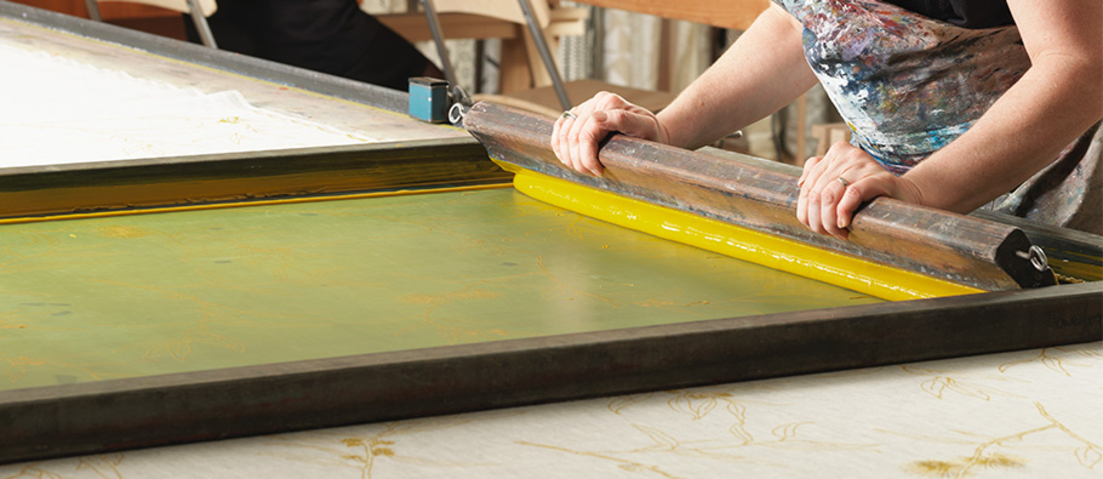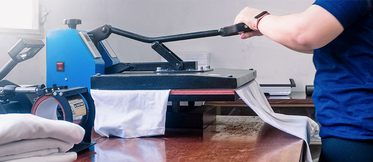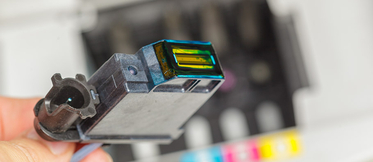Differences between screen printing and sublimation printing

While screen printing is so ancient that it was already used thousands of years ago by the Egyptians, sublimation was developed in the middle of the last century. However, both are useful and very popular printing techniques — especially now that personalising products has become popular. The stamping process, though, differs considerably from one technique to another. Let's take a look at the main differences so you can discover which technique is best suited to your needs.
What is screen printing?
Screen printing is a printing technique where a mesh is used to transfer ink onto a substrate. There are different types of screen printing which vary according to the printing process employed the object to be printed onto and the type of press used.
To screen-print a T-shirt, for example, you’ll need a few things: screen printing screens or frames with mesh, emulsion, a squeegee or other tool to help you spread the emulsion on the screen fabric, screen printing inks or lacquers, an exposure unit or a 500 watt lamp and an emulsion remover to clean the screen when you’re done. If this is professional screen printing job, you'll need a few more more things, but this is the minimum you'll need to get the job done. If you need more information, you can read our screen printing guide.
What is sublimation printing?
For sublimation printing, you'll need an inkjet printer, sublimation ink, sublimation paper and a transfer plate. This printing technique consists of transferring the design you have printed with the dye sublimation ink onto a specific substrate through heat. In other words, the ink, which is in a solid state, will react to the heat by changing from a solid to a gaseous state and will permeate the product. If you need more information, you can read our sublimation guide.
What are the differences between screen printing and sublimation?
Both the technique and the materials required to carry it out are different. As we've mentioned, screen printing requires more equipment than sublimation, but let's summarise the main differences between the two techniques:
- All types of fabrics can be screen-printed, but fabrics for sublimation must be made of polyester or be made up of at least 50% polyester fibre.
- When it comes to sublimation of ceramics and other non-textile products, these must have a polyester coating. However, screen printing does not have this constraint.
- Although both techniques offer high quality and long-lasting results, if you want to print photographs, you should go for sublimation. Screen printing is more suited to solid and plain colours, without shades or gradients.
- Sublimation is quicker and easier to learn than screen printing, which requires a little more expertise to achieve the desired results.
- Screen printing allows printing on any colour; with sublimation, the object to be printed on must be white or light-coloured so that the colours of the design are not affected.
- Screen printing is less cost-effective than sublimation in smaller production runs.
So, is screen printing or sublimation better?
It depends on what you want to print, the material you want to print on, the colours you want to print in and the quantity you want to print. For example, if it's a photograph of your nephew, you would have to opt for sublimation in order to get a photo-quality result. If, on the other hand, you want to print a simpler design on many T-shirts without stopping to think about what fabric they're are made of, screen printing is your best option. Both techniques are equally valid, produce good results and are durable, although both screen printing and dye sublimation have their advantages and disadvantages. So, before choosing one or the other, consider what you want to use them for.
Remember that in Webcartridge you will find all the professional printing material you need.



